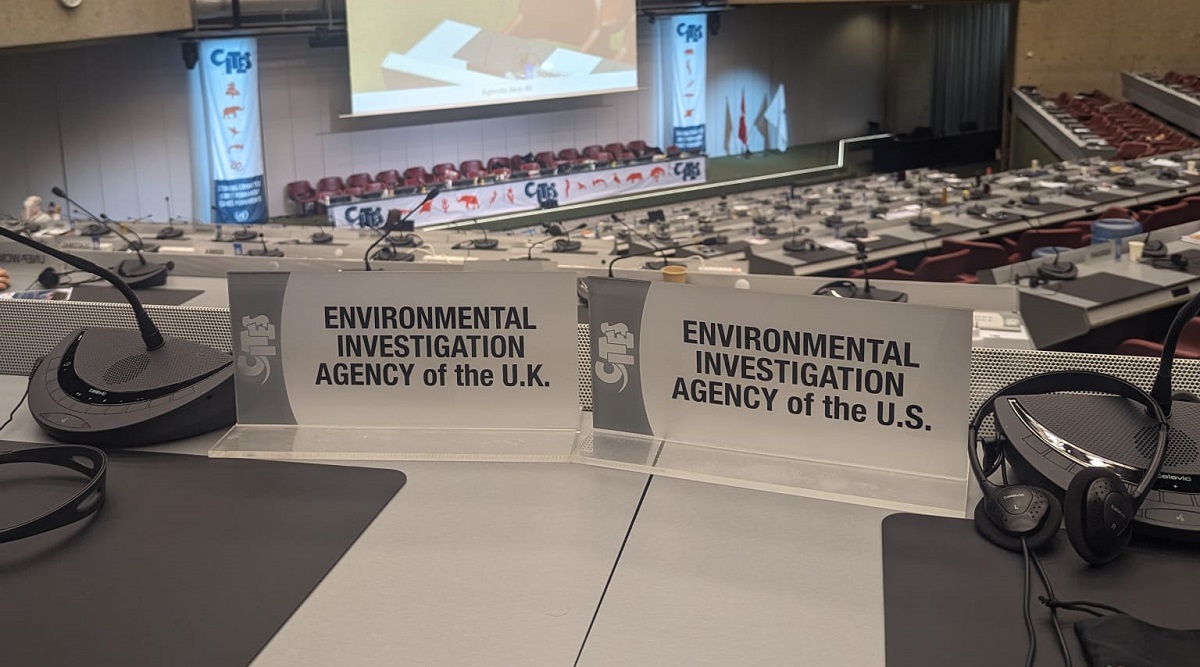At CITES 77th Standing Committee – our campaigners report on the highs and lows for wildlife



EIA sent teams of campaigners from our UK and US offices to the 77th meeting of the Standing Committee (SC77) of the Convention on International Trade in Endangered Species of Wild Fauna and Flora (CITES).
The meeting is a chance to meet new contacts, build on existing relationships and to see some of the fruits of our work over the preceding year (or years) come into effect.
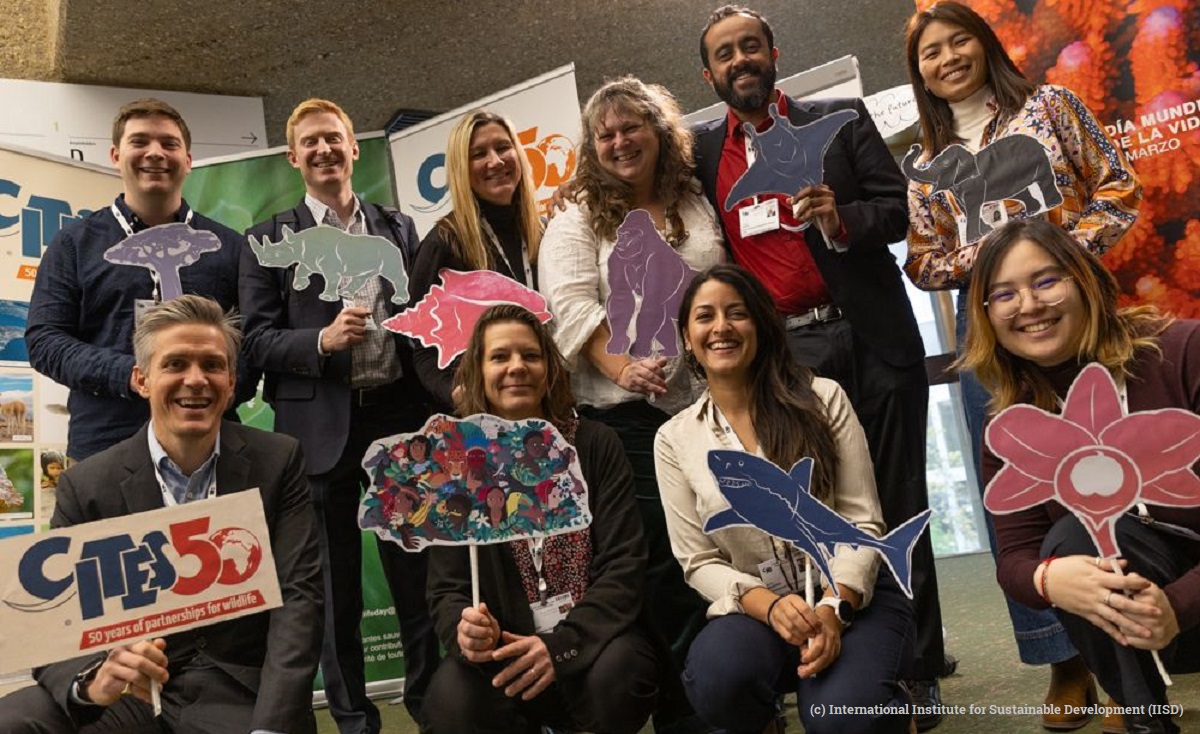
The EIA team at SC77 (c) International Institute for Sustainable Development (IISD)
Standing Committee meetings are procedural – a chance to check back in on the progress that countries make on the issues CITES has agreed, marking their homework and submitting to the collective judgement of their peers.
It is smaller than the all-singing, all-dancing Conference of the Parties (CoP), but its impact on the issues that we follow can be equally as important. Our campaigners followed issues as wide-ranging as protecting totoaba; the saiga antelope; Asian big cats; elephants; rhinos; pangolins and West African rosewood.
We also fed into processes to strengthen the way wildlife crime is tackled in West and Central Africa, owing to our extensive experience working there since 2020.

(c) Thomas Jefferson
EIA ran well-attended side events, one of which focused on our campaigning efforts to spur further action to stop the illegal trade in totoaba fish, which is driving the vaquita porpoise to extinction.
During the meeting itself, EIA advocated, along with NGO partners Animal Welfare Institute, the Center for Biological Diversity and the Natural Resources Defence Council, for the strengthening of Mexico’s Compliance Action Plan (CAP) to fully implement the 2020 Regulatory Agreement and to ensure more robust efforts to prevent illegal totoaba fishing and trade and to allow the recovery of critically endangered vaquitas.
The Standing Committee agreed to the Secretariat’s existing recommendations, including that Mexico should report back to SC78 on all relevant CAP measures, and that a third technical mission to Mexico will take place to monitor progress, as well as missions to China and the US.
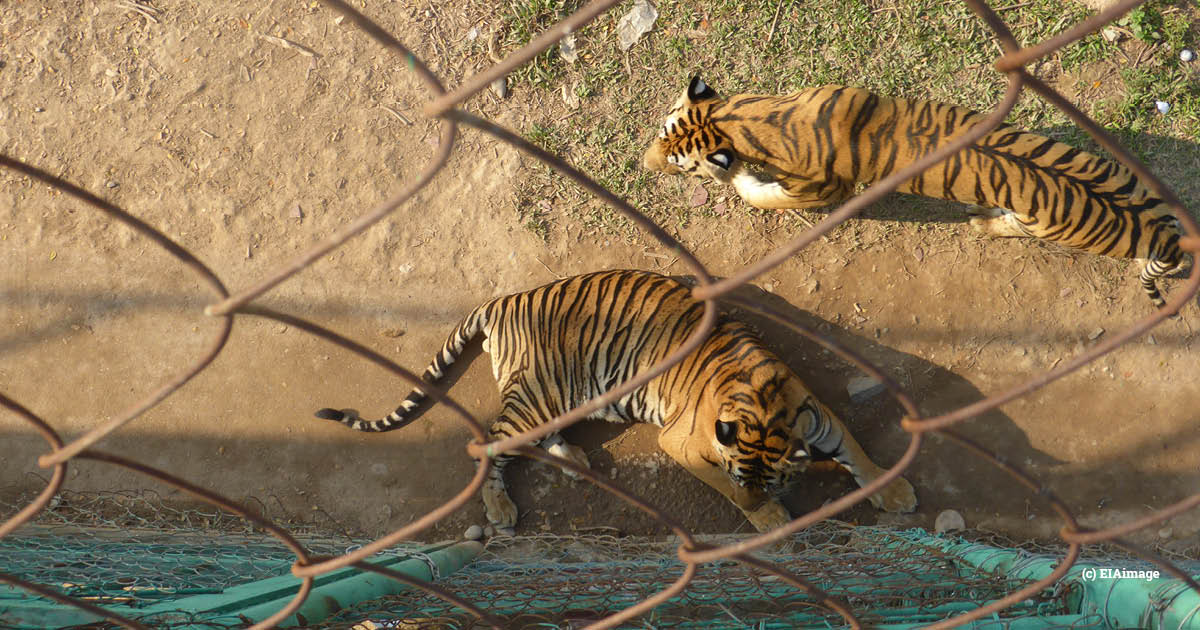
Captive tigers in Laos (c) EIA
There were several documents with strong recommendations relating to CITES Appendix I Asian big cats (tigers, leopards in their Asian ranges, snow leopards, clouded leopards and lions in their Asian ranges) that were adopted at SC77. These provide the basis for urgent action in key countries with progress to be reviewed at SC78 in February 2025.
Parties agreed that Laos had been given sufficient time since 2016 to improve legislation and enforcement in relation to all kinds of illegal wildlife trade and specifically to phase out tiger farms, but had come up short. This is despite the millions of dollars’ worth of capacity-building and training provided by donor countries and NGOs.
We know from EIA and partner investigations that Laos’ weak legislation and criminal justice response has been exploited by regional criminal networks and that businesses with high-level political associations linked to the tiger farms have enabled them to operate with impunity. Some of these businesses are also involved in the highly lucrative macaque trade, with wild macaques being smuggled into Laos from neighbouring countries to be laundered as ‘captive-bred’.
The Standing Committee finally adopted a recommendation for trade suspensions, which won’t be lifted until Laos demonstrates real progress with a list of actions. While it is regrettable that the situation has come to this, it is something EIA has been advocating in recent years and is perhaps the only way to get the attention of the highest levels of Government to fix the systemic problems in the country.
On specific Asian big cat agenda items, the general lack of reporting by range States on actions taken to implement the CITES Resolution and Decisions relating to Asian Big Cats was noted and SC77 adopted recommendations that will focus in on the leopard trade in particular.
The release of EIA’s Investing in Extinction report into the use of endangered species in traditional Chinese medicine and our related side event were timely reminders of the need for more attention on leopards. More broadly, SC77 directed the Secretariat to prepare draft country-specific recommendations for consideration by the 78th Meeting of the Standing Committee. Given the lack of time for debate at SC meetings with a fuller agenda in recent years, this move will focus minds and push for more rapid progress at the national level.
On the subject of tiger farms, SC77 adopted a series of country-specific recommendations, directed to Czech Republic, South Africa, Thailand and Vietnam (noting that recommendations to Laos on tiger farms is contained in a separate document).
The Secretariat reported that it will be visiting the US in early 2024. China has yet to extend an invitation to the Secretariat to conduct a mission. In its report to SC77, the Government of China claimed it does not have any commercial breeding operations for tigers, which reads contrary to its previous reports to CITES and runs counter to all the evidence gathered by EIA, other NGOs and media over the past two decades.
Progress with implementing the SC77 recommendations will be reviewed at SC78. The timely release of the Roadmap to Closing Captive Tiger Facilities of Concern at a FourPaws-hosted side event at SC77 was well-received by some of the Parties affected by tiger farming and by those range states that are affected by tiger trade stimulated as a result of tiger farming. The next phase for EIA and the other authors of the Roadmap is engagement with national stakeholders to help tailor approaches to national circumstances.
In relation to all big cats (cheetah, mainland clouded leopard, Sunda clouded leopard, lion, jaguar, leopard, tiger and snow leopard), there was discussion around the outcome of the CITES Big Cats Task Force, which EIA participated in and presented at, in April 2023. SC77 agreed that it was premature for a common resolution for all big cats to be considered at this time, a position shared by EIA and other NGOs. The Secretariat has been tasked to conduct further consultation about the merits and drawbacks of a single resolution and report back to SC78.

Elephants in the Selous Game Reserve, Tanzania (c) EIA
National Ivory Action Plans
After successfully lobbying for the review of the National Ivory Action Plan (NIAP) process at CoP19 in Panama last year, the EIA Elephant team’s key priority for SC77 was to evaluate the progress being made by countries in the NIAP process to tackle poaching and ivory trafficking. We believe the process must continue as normal until the review is finalised and its results published in 2025.
We therefore pushed hard for CITES Parties to recognise the importance of upholding the NIAP process because non-reporting and slow progress risk severely undermining its original objectives. Despite efforts by some Parties, reporting on progress was at an all-time low, with 62 per cent of countries in the process failing to submit adequate reports in time for consideration at the meeting.
Non-reporting flouts the rules of the NIAP process and should, rightly, be treated as a compliance matter as the absence of reports means there is no information on how countries are faring in their fight against poaching and ivory trafficking – a problem for conservation, transparency and accountability. We are therefore pleased that our lobbying efforts, alongside partners, resulted in NIAP countries being specifically called upon to report on their levels of ivory stockpiles by 28 February each year. This would help bolster a comprehensive understanding of how much ivory is stockpiled worldwide and provide more transparency regarding stockpile thefts and leakage into the black market.
We welcomed the strong interventions by Belgium and the UK calling for non-reporting Parties to face trade suspensions if they fail to submit their late reports within 60 days of the end of SC77, although noted with concern that non-compliance by Democratic Republic of the Congo (DR Congo) and Gabon, which both failed to submit reports to SC77, were dealt with in an inconsistent manner. We fear this may set a worrying precedent and arguably also sends a damaging signal to Parties which make concerted efforts under the process that their consistency and effort are not fully appreciated.
As a result, our Elephant team fully supported the UK’s reminder to CITES Parties that the NIAP process is a useful tool and should be upheld effectively to help Parties develop long-term resilience to poaching and ivory trafficking, echoing this sentiment in a strong intervention of our own, delivered on behalf of 11 leading organisations including WWF and WCS – our key partners on all things relating to the NIAP process.
Nigeria made a powerful intervention, drawing attention to the Secretariat’s lack of capacity to properly assess progress being made by NIAP Parties, which EIA supported. We believe the efforts Parties make in the NIAP process must be matched by the Secretariat to promote efficiency and motivate compliance. As such, we fully support the Secretariat’s call for more guidance and protocols for the consultation of experts in the NIAP process, which could be considered as part of the NIAP review.
However, we were particularly disappointed that not a single Party raised concerns about the weak progress being made by NIAP Parties such as DR Congo, Nigeria and Vietnam on key actions, including strengthening legislation and international cooperation; securing stockpiles and implementing anti-corruption measures – which, as anyone following EIA’s work will know, are central aspects in the fight against ivory trafficking and wildlife crime generally.
We will continue pushing for these country-specific recommendations to be made to promote transparency and accountability and effectiveness of counter-wildlife trafficking measures. An EIA delegation will be joining the 10th Conference of the States Parties (CoSP10) to the United Nations Convention against Corruption (UNCAC) next month to raise awareness of the role of corruption in wildlife crime, so watch this space!
Domestic ivory markets

Ivory on legal sale in Japan (c) EIA
Under the domestic ivory markets agenda item, SC77 was asked to provide guidance on criteria to determine which Parties should be included in an analysis of ivory seizures connected to legal domestic ivory markets.
EIA, together with its partner the Japan Tiger and Elephant Fund, advocated strongly in support of a proposal put forward by several African elephant range states, including Chad, Kenya and Burkina Faso, to include a broad range of Parties which allow domestic commercial ivory trade to ensure that Japan – which has the largest remaining legal domestic ivory market – is included in the analysis.
For years, EIA has shown how Japan’s ivory market contributes to illegal international trade, so we were pleased to see Senegal take the floor and make a strong intervention expressing its concerns about Japan and calling for its inclusion in the analysis.
We hoped criteria could be determined so the analysis could progress, but the Standing Committee decided on a compromise. Parties will instead submit suggestions for criteria to the Secretariat, which will then pass these to a special subset of Parties tasked with overseeing the CITES ivory seizure data programme (known as the “MIKE and ETIS Subgroup”) which will ultimately develop proposed criteria for the analysis that the Standing Committee will consider at its next meeting, scheduled for February 2025.
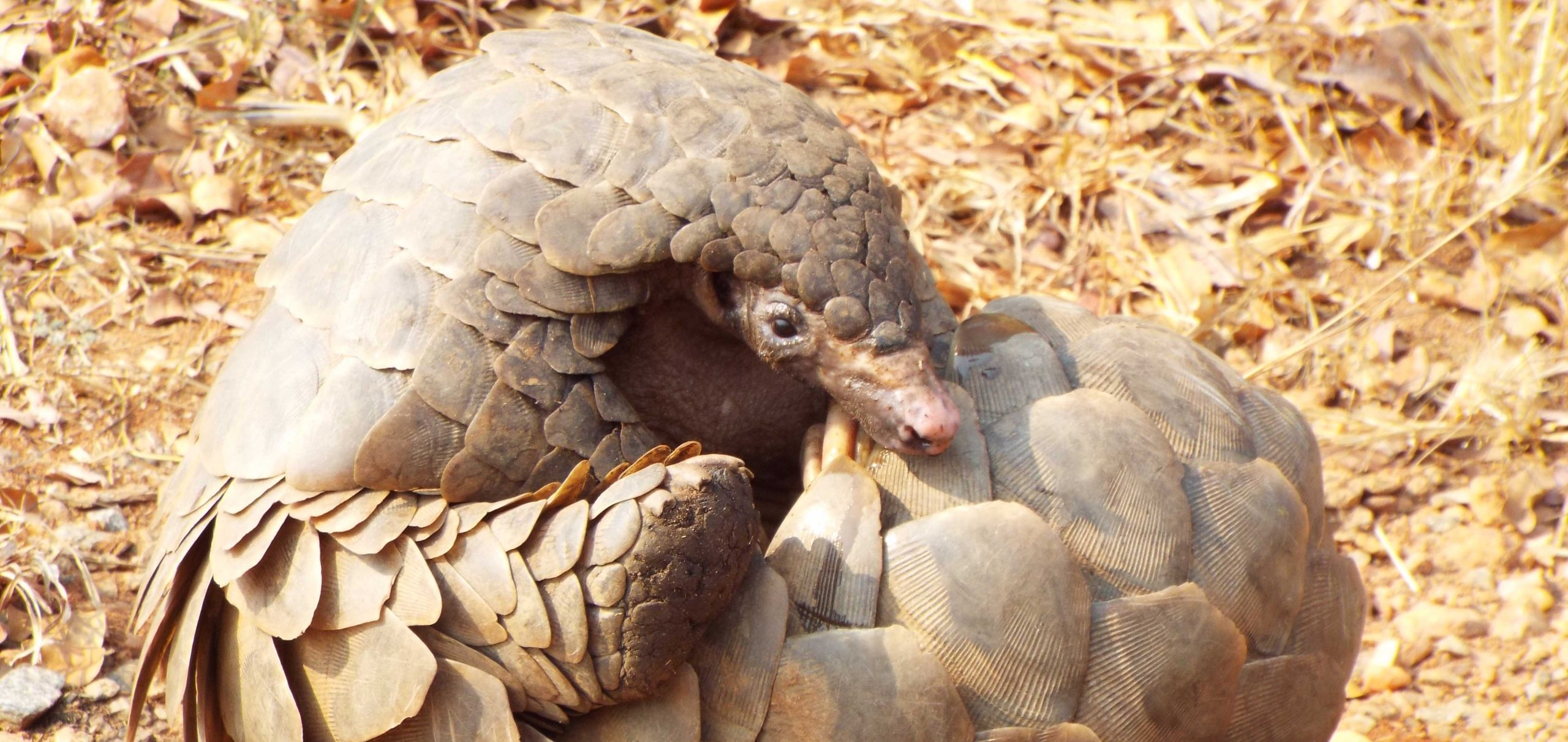
There was little substantive business at SC77 concerning pangolins, largely due to the passing of the major resolution on pangolins at CoP19 in Panama.
In one matter under Article XIII in the DR Congo – recommendation c) regarding trade in pangolin stockpiles – was removed following objections by DR Congo, despite an intervention by the UK which supported EIA’s concerns evidenced by seizure data and the country’s own reporting at SC69, showing it to have 13-14 tonnes of pangolin scales in its stockpiles yet having only reported the destruction of approximately 1.2 tonnes of this.
Without this recommendation, the trade of pangolin specimens from stockpiles held in the DR Congo may be authorised once again, signalling a regression in the progress made to prohibit trade in this species. DR Congo and all states parties will report on implementation of the last pangolins CITES resolution at the SC78.
Beyond this, our Pangolins and Asian big cat teams ran a side event at which we presented the findings of our report, Investing in Extinction. The packed event was attended by more than 80 people from a range of agencies, governments and NGOs. Given the focus of the report, we were pleased to field questions from China’s delegation to CITES and to subsequently share details with it to encourage follow-up.
Our report is clear – China has not done enough to close its domestic markets that are stimulating trade in pangolins, tigers, rhinos, leopards and other endangered and threatened species and there are actions it can take now to amend that. With the right political commitment, this is possible, but the question remains as to whether China is willing to take the necessary steps.
In the margins of SC77, given the major announcement on its eve by the US President, itself in response to pressure from EIA and partners, there was a chance to probe further on what likely pressure China may come under. We remain engaged to see what could follow.
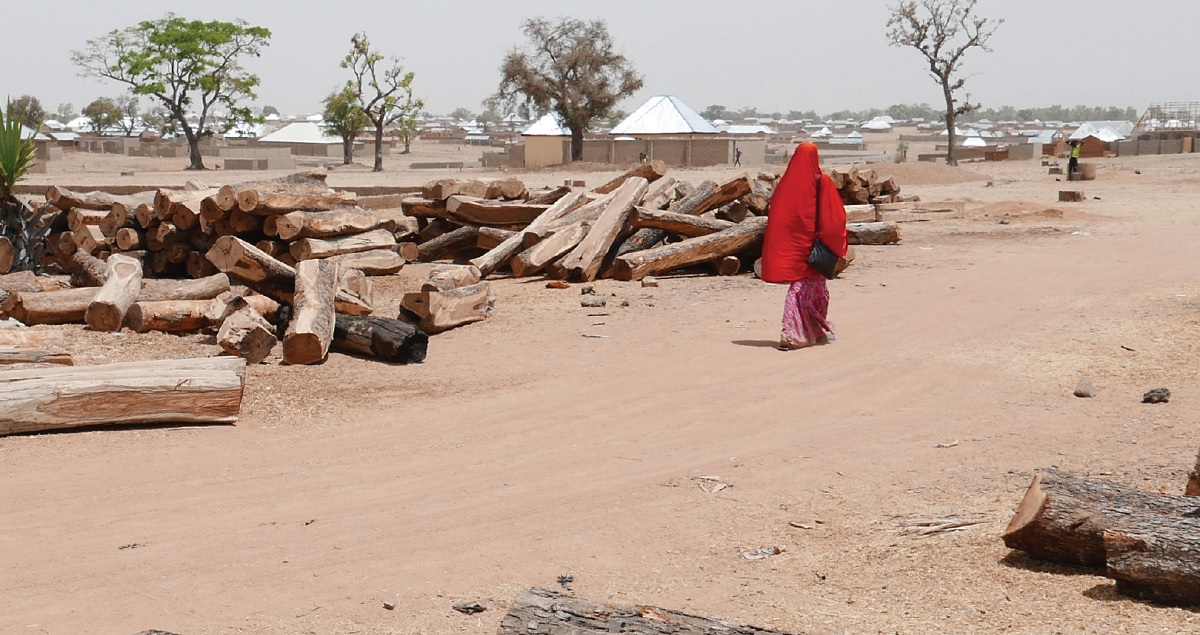
(c) EIA US
EIA and the Center on International Environmental Law intervened to maintain the trade suspension of Pterocarpus Erinacaeus (also referred to as kosso) from West Africa.
We and our partner argued that the lack of progress by West African countries in taking measures to provide safeguards against illegal and unsustainable trade meant a trade ban should remain in place. The tree is native to the Sahelian region and has been over-harvested and exploited in the region to feed demand from Asian markets, including largely from China. CITES agreed to uphold the trade ban and keep the measure under review.
EIA welcomed interventions by China and the UK calling for increased cooperation between source, transit and destination countries to tackle wildlife crime in West and Central Africa. We also aligned with Senegal and Liberia on the call for transparency and clarity in accessing existing funds under CITES to address the issues in the region.
EIA has produced a report providing detailed guidance and analysis on implementation of a set of Decisions adopted at CoP19 calling for enforcement support to address wildlife crime in West and Central Africa. We aim to distribute this document widely among the Secretariat and Parties in the two sub-regions as well as to members of the Working Group on the issues to draw attention to its scope and to highlight the need to increase the use of existing services under INTERPOL and World Customs Organisation and bilateral agreements to promote tangible enforcement cooperation between Parties.
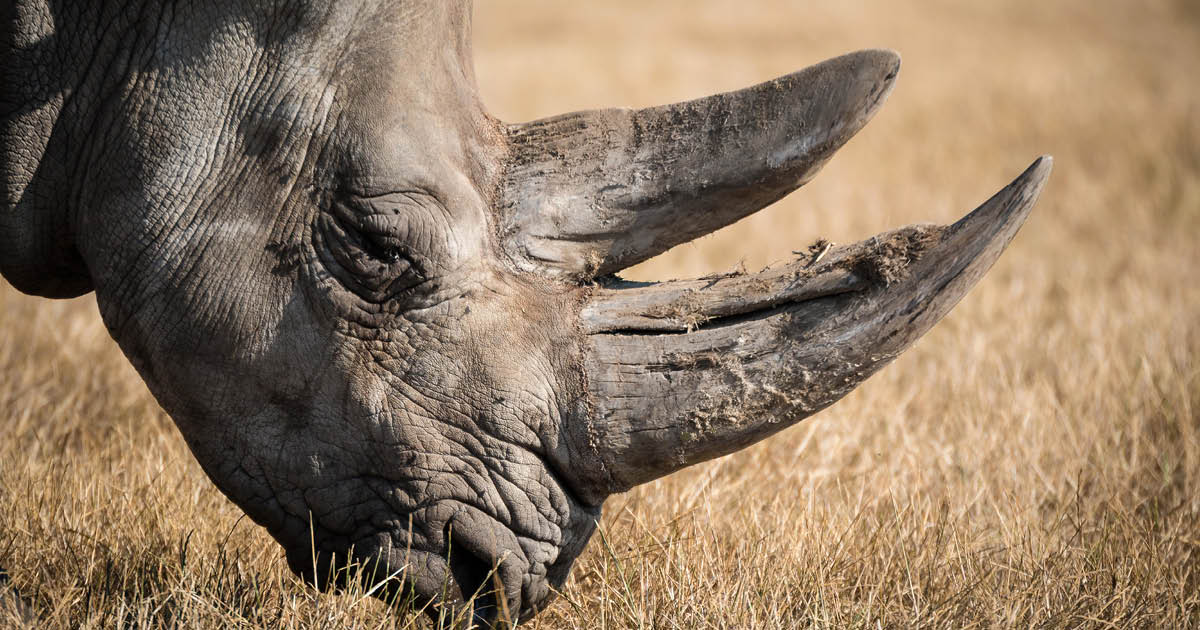
All recommendations contained in Doc. 45 on rhinos were adopted by SC77, including a crucial recommendation for Angola and Namibia to report to the next Standing Committee meeting on measures taken to address rhino poaching and rhino horn trafficking.
Angola has emerged as an export country for poached rhino horn trafficked to consumers in Asia and Namibia experienced a concerning surge in rhino poaching in 2022. Many of the rhinos killed in Namibia were Etosha National Park’s Critically Endangered black rhinos.
Most importantly, it was announced that the decision to convene the CITES Rhinoceros Enforcement Task Force has been fully funded, thanks to contributions from the US and other Parties. The Task Force meeting will take place in 2024 and a report on its outcomes will be considered by SC78.
There was high drama as the EU and UK – both after votes – were forced to follow the same process as other Parties and register facilities which breed CITES Appendix I species for commercial purposes.
